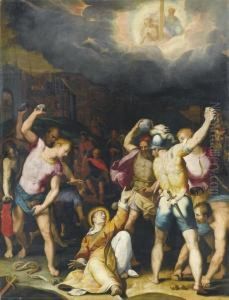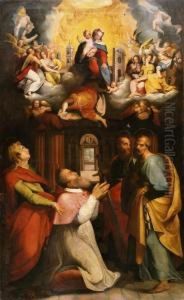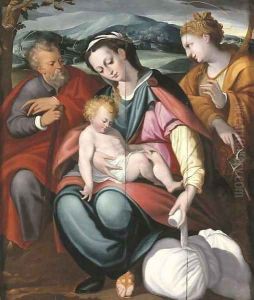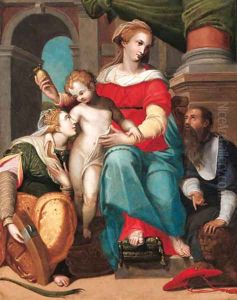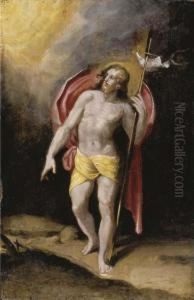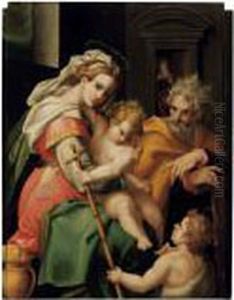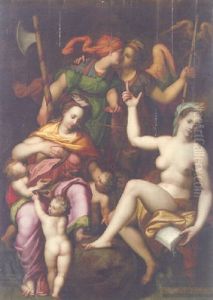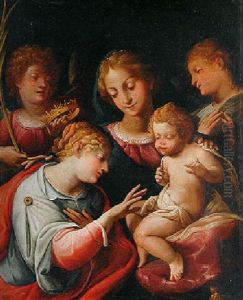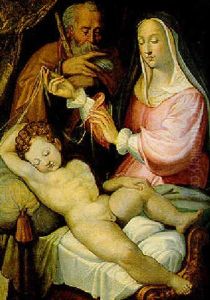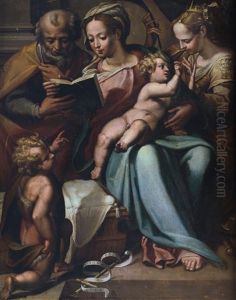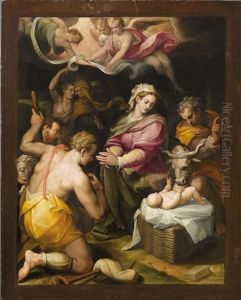Orazio Samacchini Paintings
Orazio Samacchini was an Italian painter of the late Renaissance period, also known as the Mannerist era. He was born in Bologna in 1532 and is considered part of the Bolognese School of painting. He initially trained with his father, but later became a student of the prominent painter Pellegrino Tibaldi. Samacchini's work was influenced by the styles of Tibaldi and other contemporaries such as Parmigianino and Correggio, emphasizing elegant figures and complex compositions.
Samacchini's career included working on frescoes for churches and palaces. He was particularly active in his hometown, Bologna, where he contributed to the decoration of the Palazzo Poggi and the Oratory of Santa Cecilia, among other sites. His religious works are characterized by their vibrant colors and dramatic expression, typical of the Mannerist style, which sought to create art with heightened emotion and artificial elegance as a reaction against the balanced and harmonious compositions of the High Renaissance.
Despite his contributions to the Bolognese School, Samacchini did not gain the same level of fame as some of his contemporaries. Nevertheless, his work remains a significant example of mid-16th-century Italian painting, reflecting the transitional period between the High Renaissance and the Baroque era. Samacchini's legacy is preserved in various Italian churches and museums, which house his altarpieces, frescoes, and oil paintings.
Orazio Samacchini died in Bologna in 1577. His death marked the loss of a prolific artist who had a notable impact on the development of late Renaissance art in Northern Italy. Although Samacchini may not be as widely recognized today, his artistry continues to be appreciated by those who study the evolution of European art and the intricate beauty of Mannerist painting.









